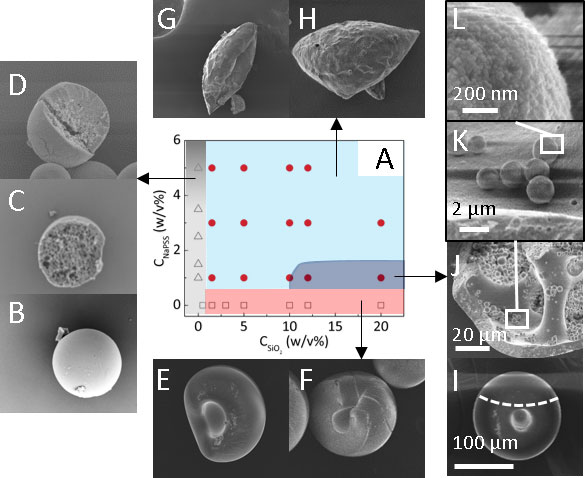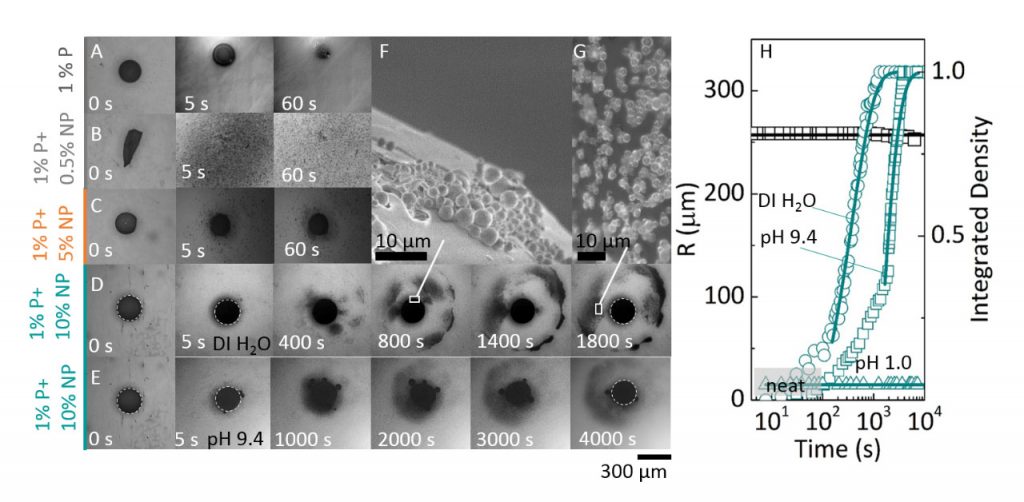The precise spatio-temporal delivery of nanoparticles from polymeric capsules is required for applications in wide-ranging fields from medicine to materials science. Facile and robust approaches for nanocomposite capsule fabrication, exhibiting a triggered nanoparticle release, remain however elusive due to the complex links between polymer-nanoparticle phase behaviour, diffusion, phase inversion and directional solidification.
Droplet extraction provides an attractive route to fabricate a range of spherical and anisotropic polymer nanoparticle capsules with a controllable internal microstructure. The assembly mechanism is founded on the engineering of the thermodynamics of mixtures, de-mixing and coarsening, phase inversion, and directional solidification during solvent extraction.
We demonstrate that microporosity and capsule morphology can be precisely controlled without resorting to complex synthetic routes. We investigate a model system of polyelectrolyte sodium poly(styrene sulfonate) and 22-nm colloidal silica and demonstrate a robust capsule morphology diagram, achieving a range of internal morphologies, including nucleated and bicontinuous microstructures, as well as isotropic and non-isotropic external shapes.
Upon dissolution in water, we find that capsules formed with either neat polymers or neat nanoparticles dissolve rapidly and isotropically, whereas bicontinuous, hierarchical, composite capsules dissolve via directional pulses of nanoparticle clusters without disrupting the scaffold, with time scales tuneable from seconds to hours. The versatility, facile assembly, and response of these nanocomposite capsules thus show great promise in terms of precision delivery.
| Read more: Udoh E. et al., Sci. Adv. 3, eaao3353 (2017), DOI: 10.1126/sciadv.aao3353SoftComp partner: Imperial College London |




